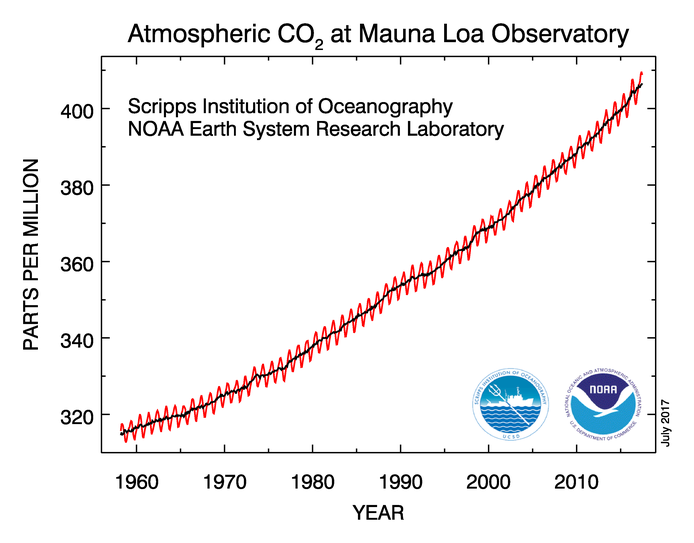

In the centuries before the industrial revolution, CO2 levels in the atmosphere were around 280 parts per million (ppm), a value near the upper end of the range of values from the last million years. Current observations indicate that the CO2 concentration has recently risen past 400 ppm—a 43 percent increase over preindustrial levels—and is growing at about 2 ppm per year.

There is little doubt that the increase in atmospheric CO2 is due to human emissions, as fossil fuel burning and forestry and agriculture have released more CO2 into the atmosphere than has accumulated since the 19th century. Since 1870, human activities have released about 2,000 billion metric tons of CO2 (GtCO2) into the atmosphere through the burning of fossil fuels and clearing of land. If all of that CO2 had accumulated in the atmosphere, then concentrations would already be approaching 550 ppm (i.e., a doubling of the preindustrial concentration). Instead, the amount of CO2 in the atmosphere has only increased by about 110 ppm or about 850 GtCO2 since the late 19th century. The rest has been captured by plants (via photosynthesis) and the oceans (which dissolves CO2 in seawater). Together, these natural processes have captured about 60 percent of human CO2 emissions from the atmosphere.
A second line of evidence proves that the CO2 accumulating in the atmosphere comes from industrial activities. The chemical signature of fossil fuels, which are low in the unstable isotope of Carbon-14, is detectable in the atmosphere.
Were emissions to suddenly stop, those same natural processes would capture and remove excess CO2 from the atmosphere. However, these processes will take hundreds of years to significantly reduce atmospheric CO2, and thousands of years to completely capture CO2 from fossil fuel burning back into the natural geochemical cycle by depositing the emitted carbon into the ocean and ocean sediments. Accordingly, any climate change associated with emissions from CO2 should be expected to last tens of thousands of years, all else being relatively equal.